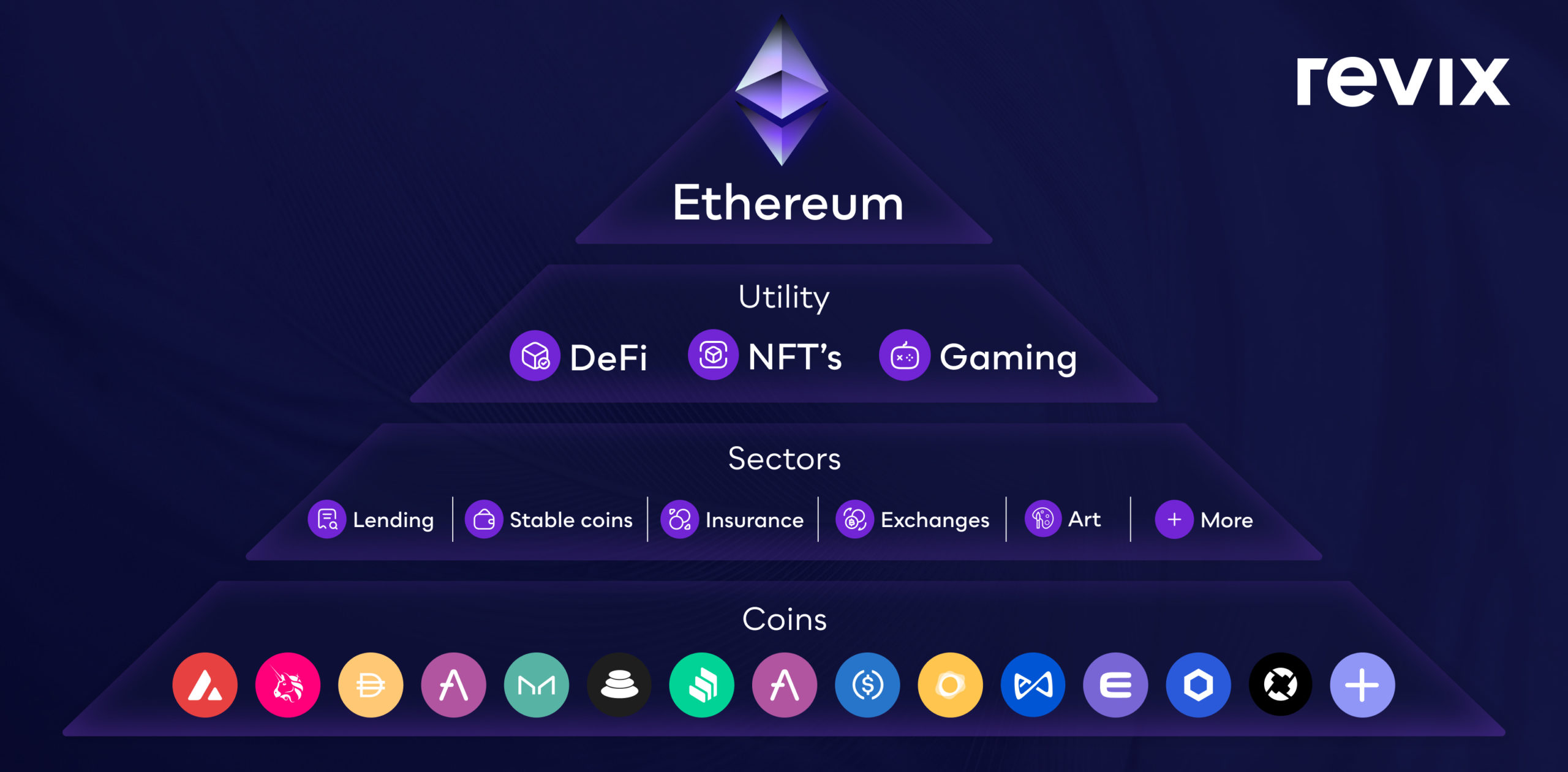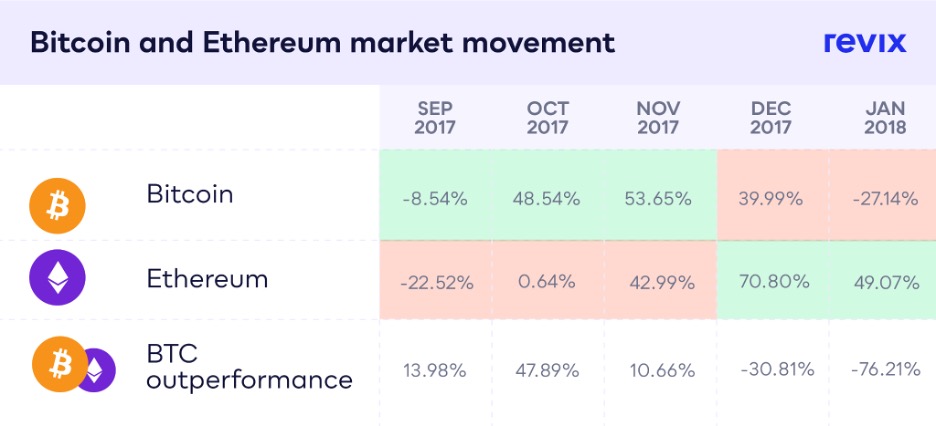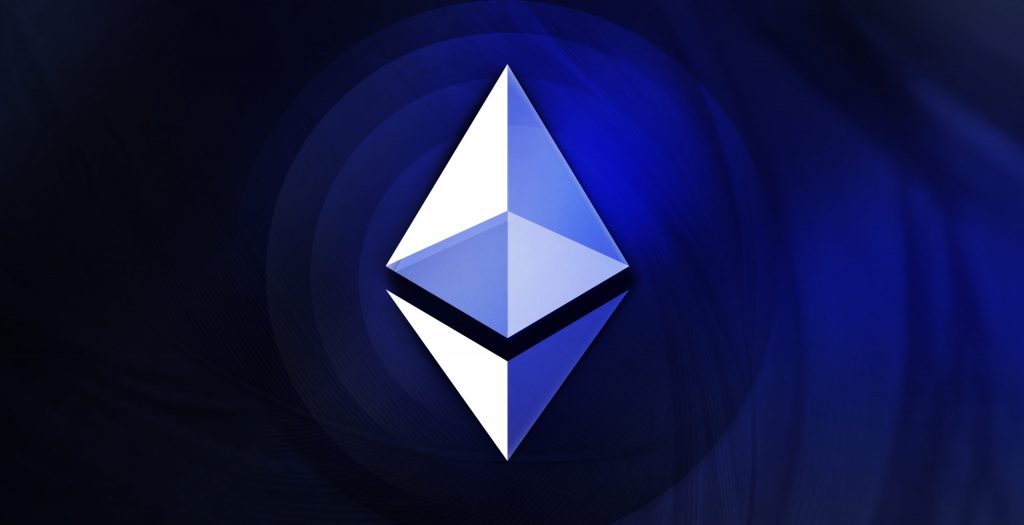Welcome to part two of our series of articles designed to help you understand the flow of money through different types of cryptoassets. We examine historical trends which appear to drive a predictable sequence of investor behaviours following a Bitcoin price rally.
In part one of this series, we examined why Bitcoin tends to be the first to move, its power to usher first-time crypto investors into the fold and how that has been shown to trigger the flow of money we are discussing in this series.
This week we’re taking a closer look at phase two of the cycle, in which money flows from Bitcoin to Ethereum. We’ll gain a clearer understanding of why Ethereum has grown to be the behemoth that it is and why investors with ears to the ground expect it to follow in Bitcoin’s bull-sized footprints.
Why is Ethereum important?
Given the hard limit set on its supply and the surprising speed at which it is gaining global adoption, it’s easy to understand why many consider Bitcoin to be the cryptoasset equivalent of gold, at least from an investment perspective. So with Bitcoin leading the pack in terms of becoming money 2.0, why should an investor care about Ethereum, the second-largest cryptoasset by market cap?
The simple answer is, as of 2021, Ethereum looks set to become the infrastructural layer upon which a decentralised internet can and is being built. Entirely new sectors of digital services and innovative platforms have already sprung up, and all are built on the ever-expanding capabilities and capacity of the Ethereum Network. These are some of the most significant examples.
1. Decentralised Exchanges
Decentralised exchanges, or DEXs, make it possible to trade digital assets without the need for an intermediary. All trades happen securely on-chain, eliminating the need for 3rd party management or administration. Some of the most successful DEXs thus far are Uniswap, Sushiswap and Balancer.
2. Stablecoins
A stablecoin is a cryptocurrency whose price is linked to another, often less volatile, asset. USDC, for example, is pegged to the price of the US dollar. Stablecoins have many uses, but they are most commonly used for trading and storing value on crypto trading platforms. The most significant examples of stablecoins built on Ethereum include Dai, PAX and USDC.
3. Lending
Lending protocols built on Ethereum have made it possible for users to lend their digital assets in exchange for a return, much like a normal bank would. You can also borrow cryptoassets against the collateral you put up. All without an intermediary or any 3rd party involvement in the transactions. Some of the most popular Decentralised lending platforms are Compound, Maker and Nexo.
4. NFTs
NFTs are “one-of-a-kind” digital assets that can be bought and sold like any other piece of property. These digital tokens, which exist on a blockchain, can be thought of as certificates of ownership for virtual assets (such as in-app items and digital art) or physical assets (such as real-life paintings and even houses).
The worlds of art, finance and gaming are all abuzz about NFTs right now, but one thing that everyone can agree on is that Ethereum is still king in the NFT space. The vast majority of the biggest names in the NFT space are built on Ethereum, from games like Axie Infinity, CryptoKitties and Decentraland, to tokens like Opensea and Audius.
 These are just some of the most exciting Ethereum-powered sectors in the decentralised finance space. We haven’t even touched on insurance, derivatives or asset management platforms, which are making their own waves. Nonetheless, it is clear how significant Ethereum has become in defining the future of the way people trade, earn and play.
These are just some of the most exciting Ethereum-powered sectors in the decentralised finance space. We haven’t even touched on insurance, derivatives or asset management platforms, which are making their own waves. Nonetheless, it is clear how significant Ethereum has become in defining the future of the way people trade, earn and play.
Investing in the future of… everything
The market cap of ETH, Ethereum’s native token, now stands at a staggering $445 billion. It’s clear to see that ETH is winning the smart contract war, with Ethereum accounting for over 70% of all the value locked in smart contracts. It’s a behemoth, outsized only by the giant that is Bitcoin. So while still commonly referred to as an “altcoin”, Ethereum isn’t nearly as risky an investment as smaller-cap altcoins. That is one of the primary reasons why investors will dive deeper into crypto investing with ETH before taking slightly bigger risks on smaller-cap coins. Let’s examine some of the other reasons.
Firstly, a sustained Bitcoin price rally invariably triggers a global media storm. This reignites investor interest in crypto and attracts a hoard of first-time crypto investors. With a stake in the crypto game, these new investors begin to take interest in cryptoassets besides Bitcoin. Like many before them, they soon discover that the weird and wonderful world of crypto extends far beyond Bitcoin.
 A more diverse interest in the crypto space as a whole inevitably leads to the discovery of the multitude of exciting and fascinating technologies inhabiting the decentralised finance space. When it emerges that so many of these are built on Ethereum, the network’s potential becomes an incredibly compelling investment proposition. In the graph above, the pace at which investor interest shifts from Bitcoin to Ethereum is remarkable. We used this graph because it happens to show this money flow shift occurring roughly around the current point in the crypto cycle – the final quarter of the year. This is neither the first nor the last time we are likely to see this trend play out.
A more diverse interest in the crypto space as a whole inevitably leads to the discovery of the multitude of exciting and fascinating technologies inhabiting the decentralised finance space. When it emerges that so many of these are built on Ethereum, the network’s potential becomes an incredibly compelling investment proposition. In the graph above, the pace at which investor interest shifts from Bitcoin to Ethereum is remarkable. We used this graph because it happens to show this money flow shift occurring roughly around the current point in the crypto cycle – the final quarter of the year. This is neither the first nor the last time we are likely to see this trend play out.
As the above graph suggests, making the most of the flow of money from Bitcoin to Ethereum requires buying into the latter before the Bitcoin bull run starts to lose momentum.
We are already starting to see Ethereum move. In just the last day ETH has managed to close the gap on Bitcoin to outperform it by 8%. Could this be the beginning of the great migration into Ethereum?
It’s not too late to be an early Ethereum investor
Despite the tectonic technological shifts that Ethereum has driven in so many sectors, the network is still in its infancy. With several major updates in the development pipeline and sites set on faster and cheaper ways to manage the network, in 2021, ETH investors are still early investors.
The great news is, you can buy Ethereum via Revix and pay zero buying fees between the 22nd and the 28th of October. It’s an excellent opportunity to get ahead of the curve so that when the Ethereum wave comes, you’re already riding it.
If Bitcoin is the gateway to crypto investing, Ethereum is the gateway to smaller-cap altcoins and deeper exploration into the possibilities of a world run by DeFi. It’s at that point that things get interesting, so don’t miss part three of this series, right here, next week Friday.
Remember that with Revix, you can always refer a friend and be rewarded for it! If you refer one or multiple persons using your referral code, you will receive Revix Rewards to the value of R300 per referral.




